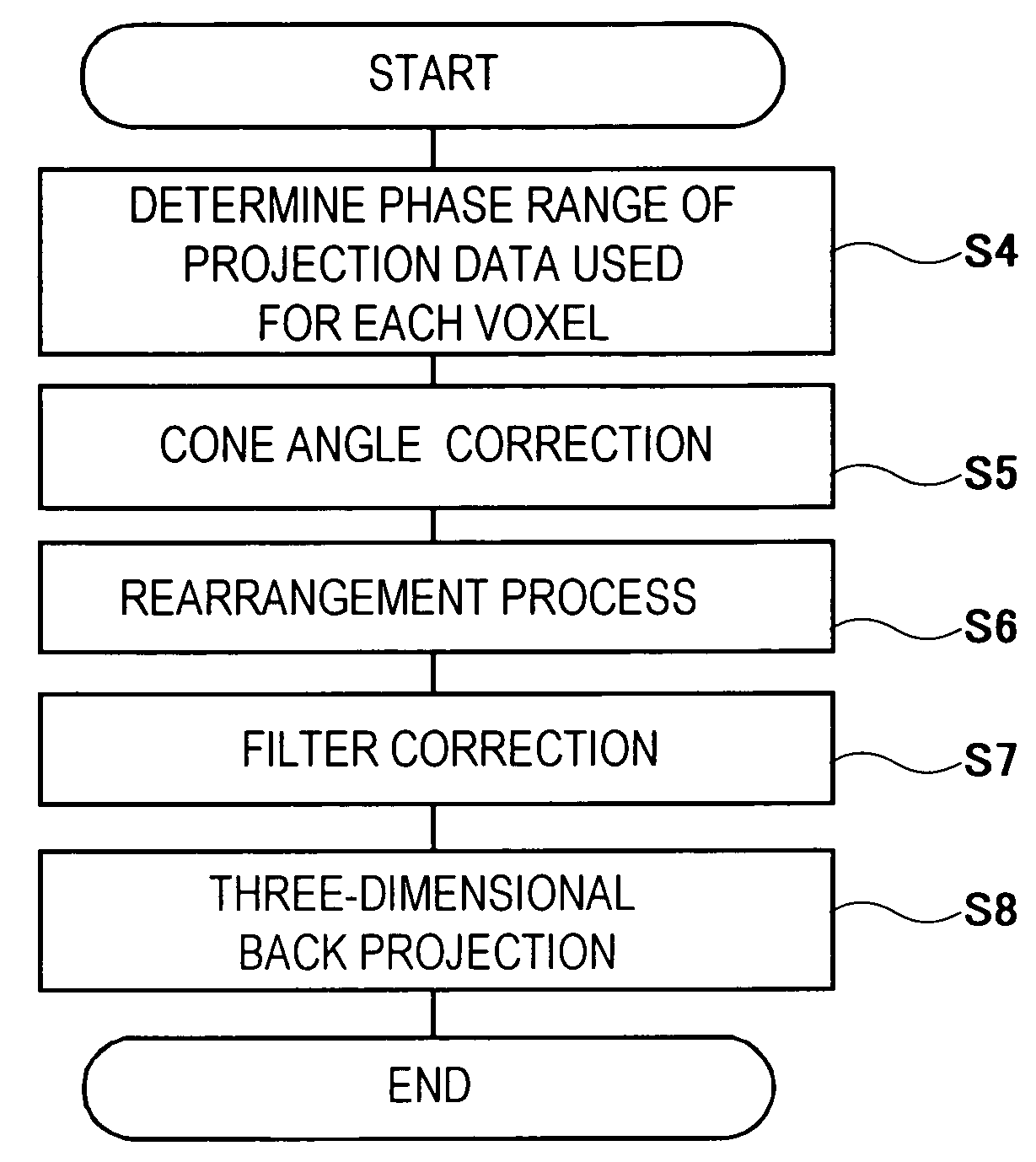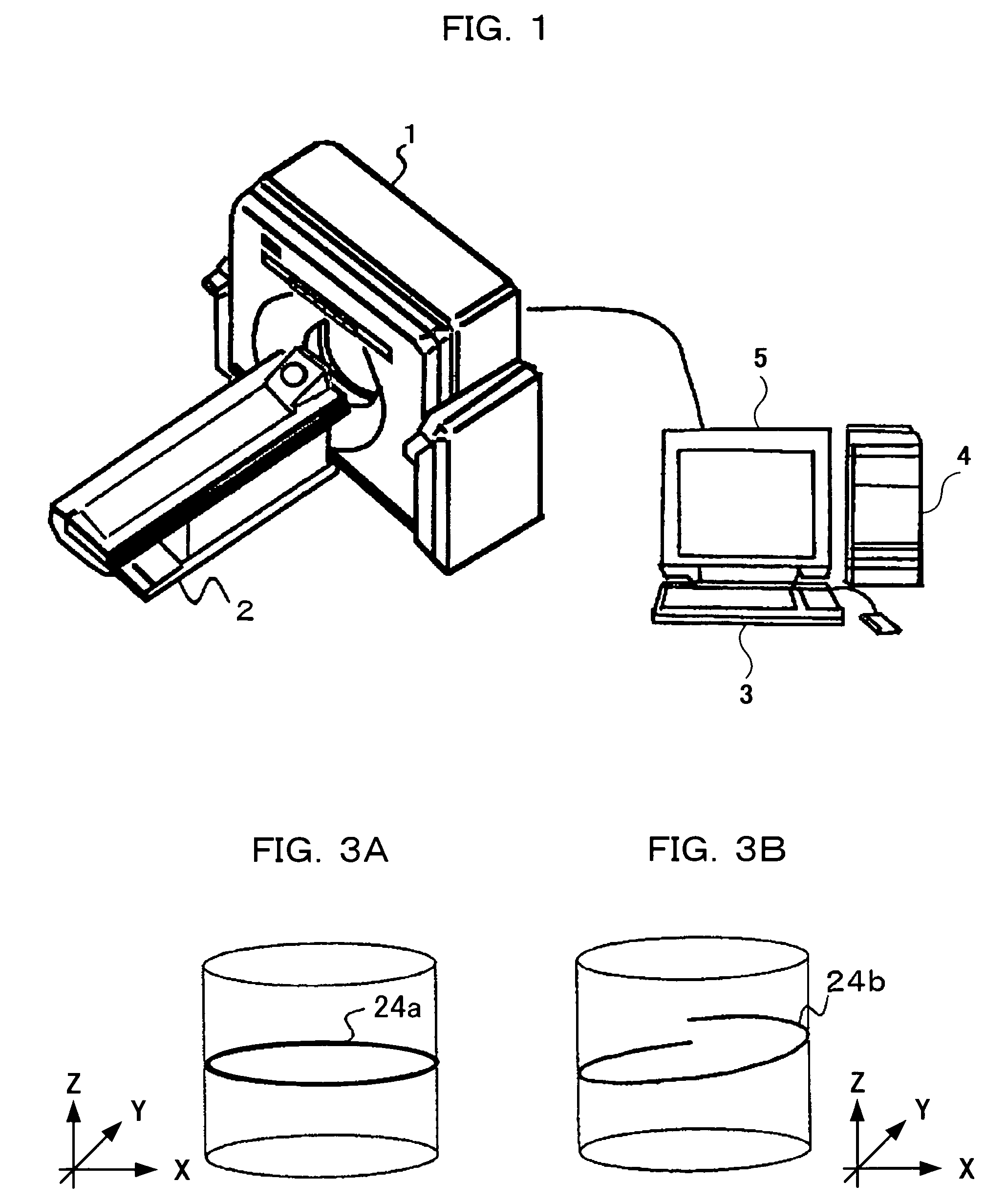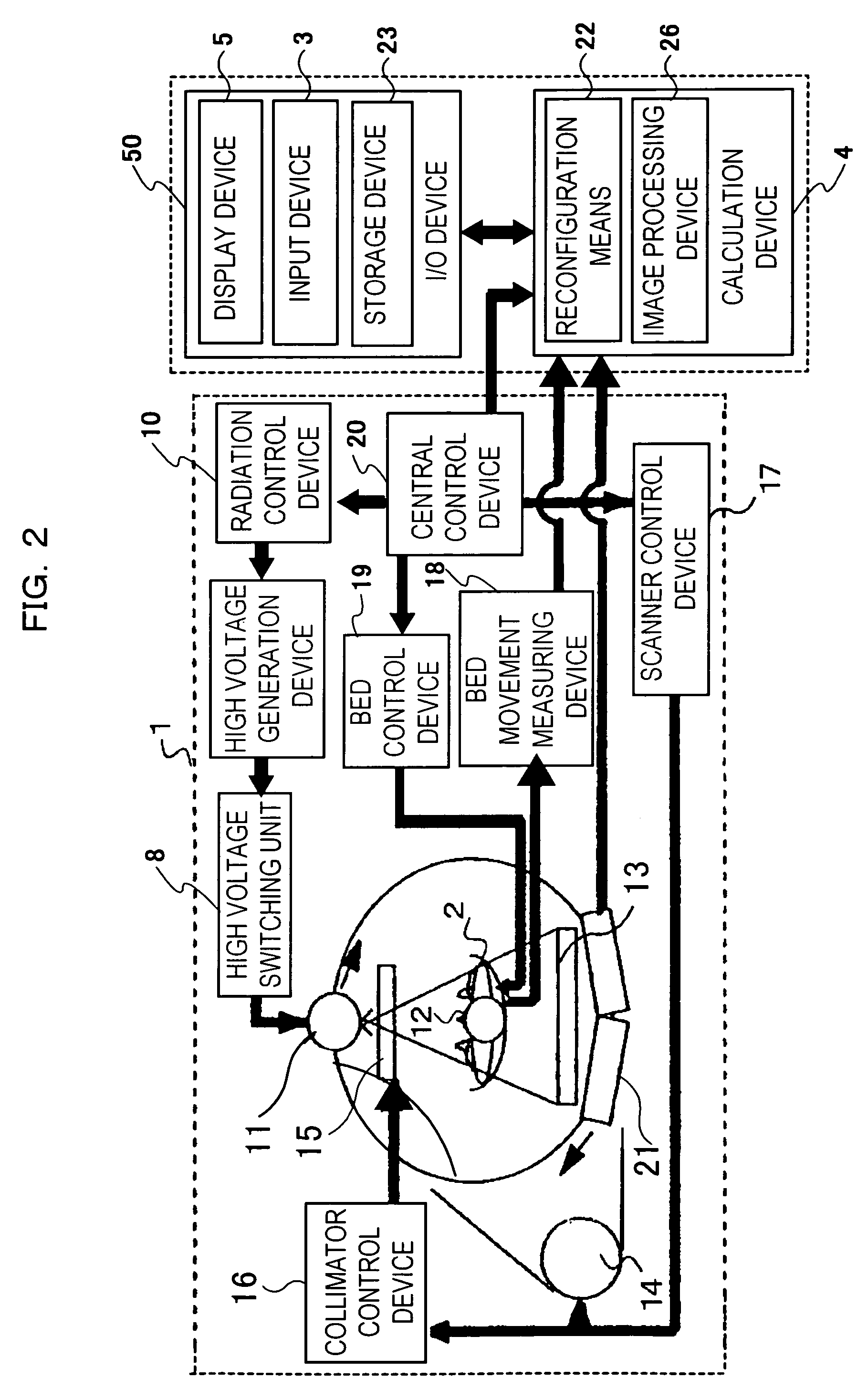X-ray tomograph
a tomograph and x-ray technology, applied in tomography, instruments, nuclear engineering, etc., can solve the problems of data redundancy changing from one pixel to another in a complicated manner, poor data utilization rate, and large time width of voxels, so as to improve image quality, shorten time width, and improve time resolution for each voxel
- Summary
- Abstract
- Description
- Claims
- Application Information
AI Technical Summary
Benefits of technology
Problems solved by technology
Method used
Image
Examples
embodiment 1
[0071]With reference now to the attached drawings, embodiments of the present invention will be explained in detail below.
[0072]FIG. 1 is a schematic outside view of a tomograph according to an embodiment of the present invention. The tomograph comprises a scanner 1 used for image taking, a bed 2 to place and move an examinee, an input device 3 made up of a mouse and keyboard, etc., for inputting measuring reconfiguration parameters such as bed moving speed information and reconfiguration position, a calculation device 4 for processing data obtained from a multi-row detector and a display device 5 which displays a reconfigured image.
[0073]FIG. 2 is a block diagram of the tomograph shown in FIG. 1.
[0074]The scanner 1 consists of a bed 2, a high voltage switching unit 8, a high voltage generation device 9, a radiation source 11 such as a radiation generation device having a radiation control device 10, a radiation detector 13 placed opposite to the radiation source 11 with respect to ...
embodiment 2
[0120]FIG. 16 is a flow chart showing a processing operation of the reconfiguration means 22 according to another embodiment of the present invention.
[0121]In this embodiment, a filter correction is performed in step S7 shown in FIG. 9, and then redundancy correction weighting is performed in step S9 and three-dimensional back projection is performed in step S8.
[0122]In the case of this embodiment, the reconfiguration means further includes redundancy correction weighting means for realizing a redundancy correction using a weighting function whose shape changes according to the phase width with respect to filter-processed projection data over a projection data range fπ determined and obtained by the operating data phase range means.
[0123]Processes in steps S4 to S8 are the same as the procedure already explained using FIG. 9 and therefore a weighting process using the redundancy correction weighting means in step S9 will be explained here.
[0124]As shown in FIGS. 17 to 19, data of 18...
embodiment 3
[0128]FIG. 23 is a flow chart showing a processing operation of reconfiguration means 22 according to a further embodiment of the present invention.
[0129]As shown in FIG. 23, after processes in step S4 and step S5, this embodiment carries out a rearrangement process on projection data of an image taken with a view of a multiple of 4 in step S11. Then, in step S7, a filter correction is performed and in step S12, projection data whose phase in the go-around direction differs by Nπ / 2 (N=1, 2, 3, . . . ) [rad] is grouped by grouping means and in step S9, a redundancy correction weighting process is carried out and in step S8, the grouped projection data is back projected to a square image group by group.
[0130]In order to realize such processing, means for acquiring projection data whose number of images taken per rotation is a multiple of 4 is provided, the reconfiguration means 22 includes means for superimposing a filter on this projection data, grouping means for grouping data at th...
PUM
 Login to View More
Login to View More Abstract
Description
Claims
Application Information
 Login to View More
Login to View More - R&D
- Intellectual Property
- Life Sciences
- Materials
- Tech Scout
- Unparalleled Data Quality
- Higher Quality Content
- 60% Fewer Hallucinations
Browse by: Latest US Patents, China's latest patents, Technical Efficacy Thesaurus, Application Domain, Technology Topic, Popular Technical Reports.
© 2025 PatSnap. All rights reserved.Legal|Privacy policy|Modern Slavery Act Transparency Statement|Sitemap|About US| Contact US: help@patsnap.com



